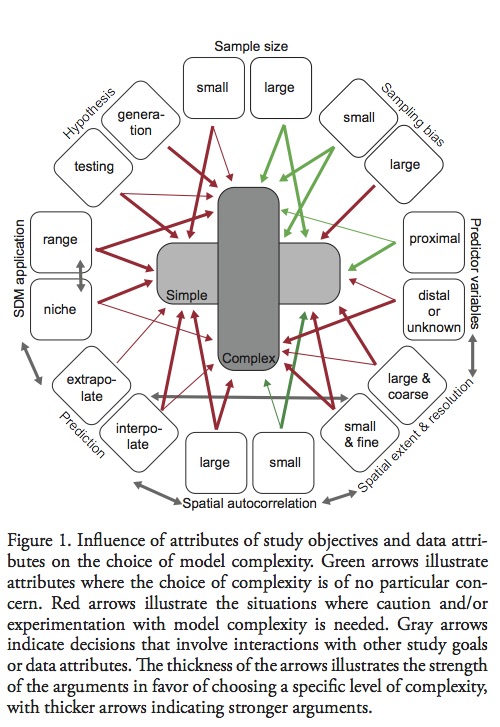Merow, C., Smith, M. J., Edwards, T. C., Guisan, A., McMahon, S. M., Normand, S., Thuiller, W., Wüest, R. O., Zimmermann, N. E. and Elith, J. (2014), What do we gain from simplicity versus complexity in species distribution models?. Ecography, 37: 1267–1281. doi: 10.1111/ecog.00845
The variety of methods and implementations of SDMs allow for a wide range of complexity, however it is critical to match study objectives and complexity for robust inference. On one hand, “under fit” models insufficiently describe observed occurrence – environment relationships, risking misunderstanding the factor shaping species distributions. On the other hand, “over fit” models risk inadvertently ascribing pattern to noise or building opaque models. Finding the balance between over and under fit models must be constrained by the attributes of data and study objective rather than traditional model selection. The authors characterize model complexity by the shape of the inferred occurrence – environment relationships, see table 1. This paper develops guidelines for deciding the appropriate level of model complexity as outlined in Fig 1.

Ecologist’s preference for simple or complex models are often influenced by their past experience with data types and questions- rather than philosophical approach.
